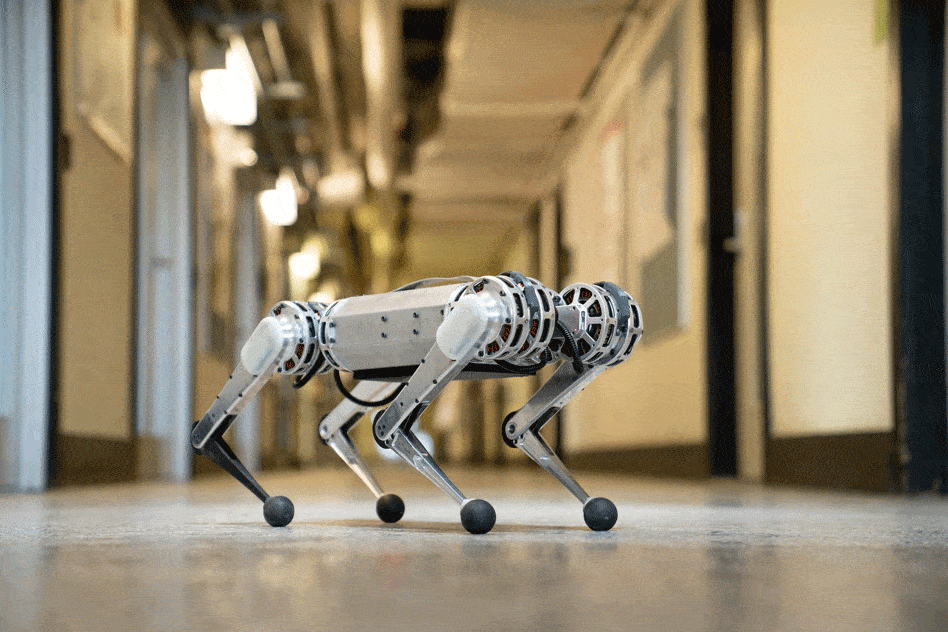Designed and built by a team at MIT’s Department of Mechanical Engineering the 9kg quadruped can run at five miles per hour, bound across uneven terrain and even rapidly right itself when it is pushed over.
The robot builds on developments made with an earlier and larger system, Cheetah 3 which often needs to be stabilised with tethers to protect its expensive, custom-designed parts.
“In Cheetah 3, everything is super integrated, so if you want to change something, you have to do a ton of redesign,” said lead developer Benjamin Katz.
Instead, the mini cheetah is designed with modularity in mind: “You could put these parts together, almost like Legos,” added Katz.
Each of the robot’s legs is powered by three identical, low-cost electric motors that the researchers engineered using off-the-shelf parts. Each motor can easily be swapped out for a new one.
These motors consist of a stator, or set of coils, that generates a rotating magnetic field; a small controller that conveys the amount of current the stator should produce; a rotor, lined with magnets, that rotates with the stator’s field, producing torque to lift or rotate a limb; a gearbox that provides a 6:1 gear reduction, enabling the rotor to provide six times the torque that it normally would; and a position sensor that measures the angle and orientation of the motor and associated limb.

“The rate at which it can change forces on the ground is really fast,” Katz said. “When it’s running, its feet are only on the ground for something like 150 milliseconds at a time, during which a computer tells it to increase the force on the foot, then change it to balance, and then decrease that force really fast to lift up. So it can do really dynamic stuff, like jump in the air with every step, or run with two feet on the ground at a time. Most robots aren’t capable of doing this, so move much slower.”
Sangbae Kim, associate professor of mechanical engineering said that the group is currently building a set of 10 robots which they hope to loan out to other labs.
During trials, the group got the robot to bound along at around five miles per hour, but with its joints capable of spinning three times faster, with twice the amount of torque, and Katz estimates the robot could run about twice as fast with a little tuning.
The team wrote another computer code to direct the robot to stretch and twist in various, yoga-like configurations, showcasing its range of motion and ability to rotate its limbs and joints while maintaining balance. They also programmed the robot to recover from an unexpected force, such as a kick to the side. When the researchers kicked the robot to the ground, it automatically shut down.
To get the robot to perform a backflip, the team wrote a “giant, nonlinear, offline trajectory optimisations” that incorporated the robot’s dynamics and actuator capabilities, and specified a trajectory in which the robot would start out in a certain, right-side-up orientation, and end up flipped 360 degrees. The program it developed then solved all the torques that needed to be applied to each joint, from each individual motor, and at every time period between start and end, in order to carry out the backflip. “We thought it would be a good test of robot performance, because it takes a lot of power, torque, and there are huge impacts at the end of a flip,” commented Katz.




Project to investigate hybrid approach to titanium manufacturing
What is this a hybrid of? Superplastic forming tends to be performed slowly as otherwise the behaviour is the hot creep that typifies hot...